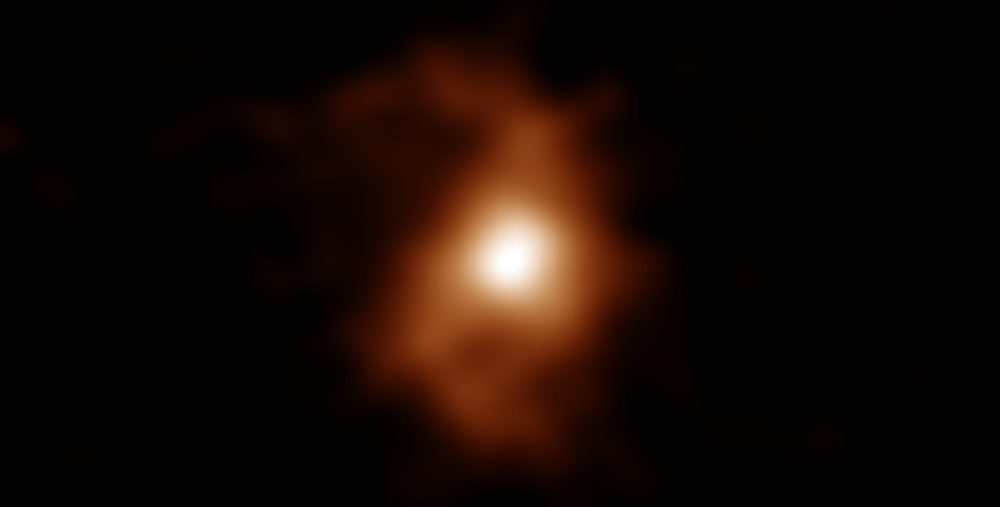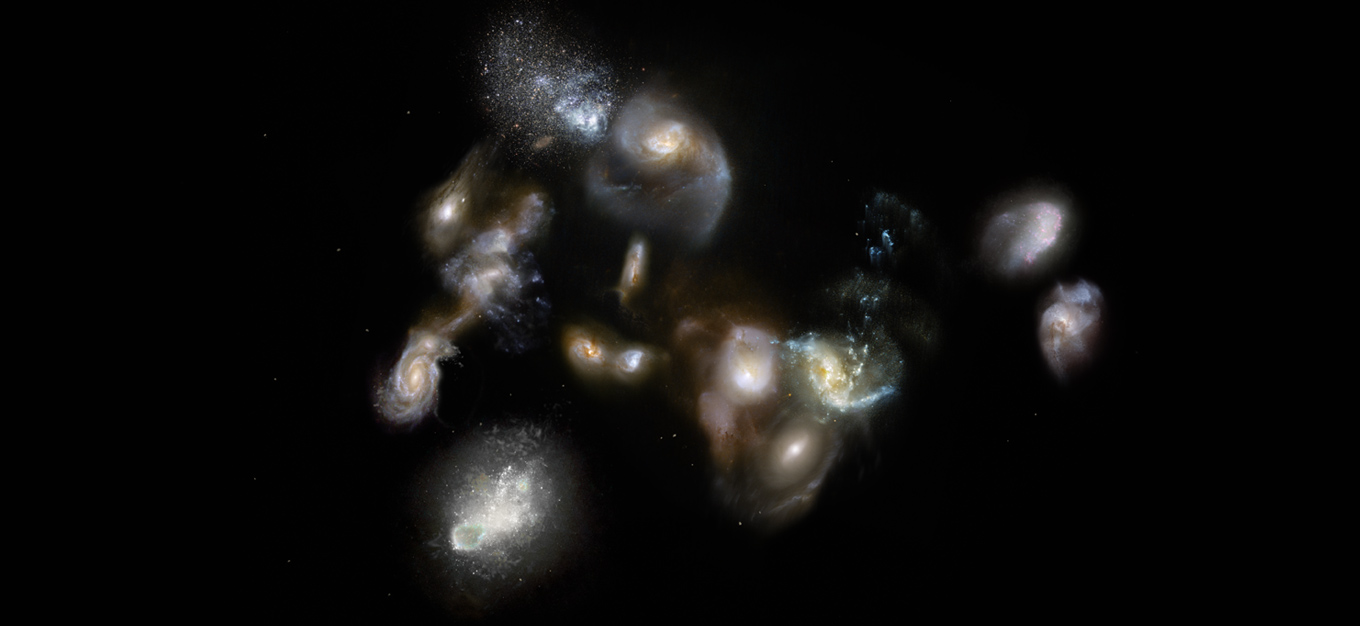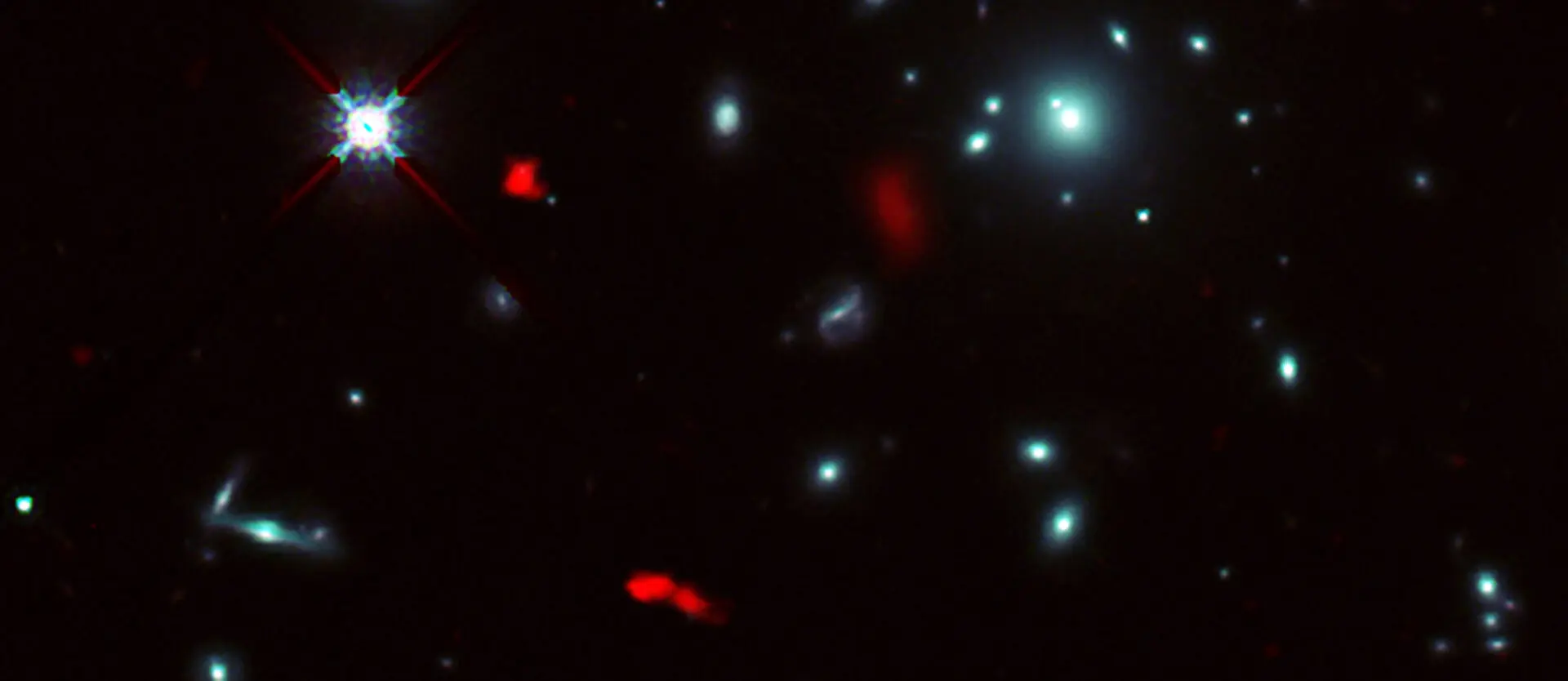ALMA Discover Most Ancient Spiral Galaxy
Analyzing data obtained with the Atacama Large Millimeter/submillimeter Array (ALMA), researchers found a galaxy with a spiral morphology in the Universe, only 1.4 billion years after the Big Bang. This is the most ancient galaxy of its kind ever observed. The discovery of a galaxy with a spiral structure at such an early stage is an essential clue to solve the classic questions of astronomy: "How and when did spiral galaxies form?"
"I was excited because I had never seen such clear evidence of a rotating disk, spiral structure, and centralized mass structure in a distant galaxy in any previous literature," says Takafumi Tsukui, a graduate student at SOKENDAI and the lead author of the research paper published in the journal Science. "The quality of the ALMA data was so good that I was able to see so much detail that I thought it was a nearby galaxy."
The Milky Way Galaxy, where we live, is a spiral galaxy. Spiral galaxies are fundamental objects in the Universe, accounting for as much as 70% of the total number of galaxies. However, studies have shown that the proportion of spiral galaxies declines rapidly as we look back through the history of the Universe. So, when were the spiral galaxies formed?
Tsukui and his supervisor Satoru Iguchi, a professor at SOKENDAI and the National Astronomical Observatory of Japan, noticed a galaxy called BRI 1335-0417 in the ALMA Science Archive. The galaxy existed 12.4 billion years ago and contained a large amount of dust which obscures the starlight, making it difficult to study this galaxy in detail with visible light. On the other hand, ALMA can detect radio emissions from carbon ions in the galaxy, enabling astronomers to investigate what is going on in the galaxy.
The researchers found a spiral structure extending about 15,000 light-years from the center of the galaxy: one-third of the size of the Milky Way. The estimated total mass of stars and interstellar matter in BRI 1335-0417 is roughly identical to that of the Milky Way.
"As BRI 1335-0417 is a very distant object, we might not be able to see the true edge of the galaxy in this observation," comments Tsukui. "For a galaxy that existed in the early Universe, BRI 1335-0417 was giant."
Then the question becomes, how was this distinct spiral structure formed in only 1.4 billion years after the Big Bang? The researchers considered multiple possible causes and suggested that it could be due to an interaction with a small galaxy. BRI 1335-0417 is actively forming stars, and the researchers found that the gas in the outer part of the galaxy is gravitationally unstable, which is conducive to star formation. This situation is likely to occur when a large amount of gas is supplied from the outside, possibly due to collisions with smaller galaxies.
The fate of BRI 1335-0417 is also shrouded in mystery. Galaxies that contain large amounts of dust and actively produce stars in the ancient Universe are thought to be the ancestors of the giant elliptical galaxies in the present Universe. In that case, BRI 1335-0417 changes its shape from a disk galaxy to an elliptical one in the future. Or, contrary to the conventional view, the galaxy may remain a spiral galaxy for a long time. BRI 1335-0417 will play an essential role in studying the evolution of galaxy shape evolution over the long history of the Universe.
"Our Solar System lodges in one of the Milky Way spiral arms," explains Iguchi. "Tracing the roots of spiral structure will provide us with clues as to the environment in which the Solar System was born. I hope that this research will further advance our understanding of the formation history of galaxies."
Additional Information
These research results are presented in T. Tsukui & S. Iguchi's "Spiral morphology in an intensely star-forming disk galaxy more than 12 billion years ago," published online by the journal Science on Thursday, 20 May 2021.
The original image release was published by the National Astronomical Observatory of Japan (NAOJ) an ALMA partner on behalf of East Asia.
The Atacama Large Millimeter/submillimeter Array (ALMA), an international astronomy facility, is a partnership of the European Southern Observatory (ESO), the U.S. National Science Foundation (NSF) and the National Institutes of Natural Sciences (NINS) of Japan in cooperation with the Republic of Chile. ALMA is funded by ESO on behalf of its Member States, by NSF in cooperation with the National Research Council of Canada (NRC) and the Ministry of Science and Technology (MOST) in Taiwan and by NINS in cooperation with the Academia Sinica (AS) in Taiwan and the Korea Astronomy and Space Science Institute (KASI).
ALMA construction and operations are led by ESO on behalf of its Member States; by the National Radio Astronomy Observatory (NRAO), managed by Associated Universities, Inc. (AUI), on behalf of North America; and by the National Astronomical Observatory of Japan (NAOJ) on behalf of East Asia. The Joint ALMA Observatory (JAO) provides the unified leadership and management of the construction, commissioning and operation of ALMA.
Image & Video

Contacts
-
Nicolás Lira
Education and Public Outreach OfficerJoint ALMA Observatory, Santiago - ChilePhone: +56 2 2467 6519Cel: +56 9 9445 7726Email: [email protected] -
Masaaki Hiramatsu
Education and Public Outreach Officer, NAOJ Chile -
Bárbara Ferreira
ESO Media Manager -
Amy C. Oliver
Public Information & News Manager




